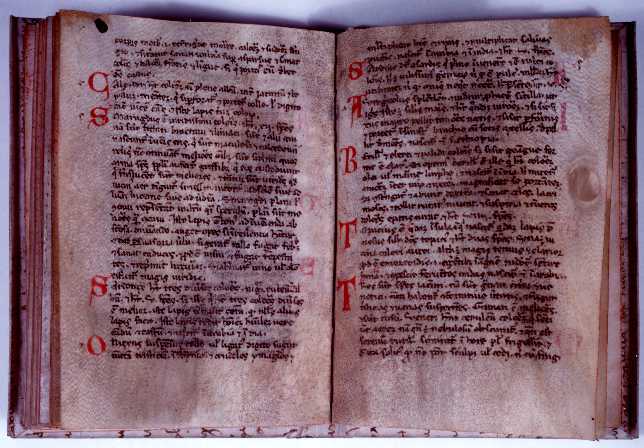The Middle Ages
Bishop Marbode of Rennes was a poet, teacher, and scholar of the late eleventh century. His best-known work, De Lapidibus ["On Gemstones"], is a verse treatise describing the medicinal, therapeutic, and magical properties of sixty different jewels. These two leaves describe the properties of chalcedony, emerald [smaragdus], sardonyx, onyx, sard, chrysolite, beryl, and topaz. De Lapidibus was one of the most popular works of scientific and medical lore in the Middle Ages. Translations into French, Spanish, Irish, Hebrew, and English are known, while over 125 Latin manuscripts have survived. This is one of only three manuscripts of De Lapidibus in the United States.
Macer's De Viribus Herbarum ["On the powers of herbs"] is one of the earliest surviving natural history texts from the Middle Ages. Nothing certain is known of "Macer Floridus" but the name is believed to be a pseudonym of a 12th century French physician, Odo of Meung. The De Viribus is a hexameter poem of over 2,200 lines, delineating the medicinal virtues of common plants and herbs. It illustrates the knowledge of both botany and therapeutics current in the medieval period. The De Viribus was a standard text in some of Europe's earliest medical schools, such as Montpellier and Salerno. The edition printed in Naples in 1477 is one of the first printed books.
The Countway Library’s collection of medieval and Renaissance books and manuscripts is so extensive that it is possible, in this instance, to compare a handwritten Latin manuscript of the De Viribus, shown above, with one of its earliest printed versions, shown here. These leaves contain the opening lines of the poem and concern the uses of artemisia [mugwort or wormwood].

